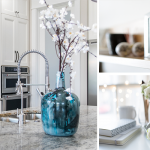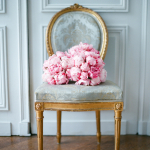The type of furniture upholstery fabric you choose does not just determine how it will look and feel, but also how much care it will require, how it will wear over the years, and the type of cleaning methods you will have to use.
Put simply, the type of upholstery fabric is a major factor when you reupholster an old chair, buy a new sofa, or get your king-size bed upholstered by upholstery specialists as per your custom requirements.
This guide on furniture upholstery fabrics will help you make an informed decision.
Check a Fabric for Durability
It’s possible that a fabric that looks aesthetically pleasing and appears to blend well with your room’s décor will wear out too soon. So, it is advisable to ask if the upholstery fabric under consideration is meant for light, medium, or heavy use.
Blended fabrics are generally stronger than their natural counterparts. Therefore, cotton can be a great choice for sofa cushions and pillows. For a family couch, however, an engineered fabric that contains cotton, polyester, and rayon fibers is a much durable alternative.
In there are kids and pets in your household, you may want to upholster chairs, sofa, etc. with viscose, microfiber fabric, etc.
If you are looking for a durable fabric that looks luxurious as well, chenille can be a great option.
Avoid printed or heavily textured patterns for upholstered furniture meant to be used in your living room. Such fabrics can wear out in tiny patches upon heavy-use.
Fabrics with woven patterns, on the other hand, are likely to withstand heavy-use for a longer duration of time.
Pick the Right Fabric
Choosing colors and patterns before narrowing down on the right type of fabric is a classic mistake people make when buying upholstery fabrics.
You can pick natural or man-made fibers for an upholstery project.
Plant-based natural fibers such as cotton and linen are derived from plants. High-quality cotton or linen fabric can be as luxurious and costly as silk. Low-grade cotton or linen fabric (with shorter fiber length), on the other hand, will look somewhat fuzzy.
Cotton is a strong fabric but doesn’t offer much resistance against stretching or wrinkling. Linen, too, wrinkles quite easily.
Cotton blended with other fabrics is a better option than plain-cotton, when it comes to selecting furniture upholstery fabric.
Linen isn’t considered a good upholstery fabric as it can’t withstand humidity and can develop mold and mildew.
Protein or animal-based natural fibers such as silk and wool are generally more expensive. Both of these upholstery fabrics are generally blended with other fabrics to lower the cost.
You can opt for reeled silk (shiny and smooth) or spun silk (textured). It can last a long time but you will need to keep your upholstery away from direct sunlight.
Wool is resistant to wrinkling. It can also withstand sunlight, abrasion, and mildew but needs to be guarded against insects.
Man-made or synthetic fibers such as microfibers are quite popular. Most upholstered furniture items you see at local furniture stores use these fabrics.
There is no dearth of options in colors, patterns, and textures when you are shopping for synthetic fabrics.
Synthetic upholstery fabrics are not only cheaper in comparison to natural upholstery fabrics but can also withstand wear and tear more effectively.
Some of the popular synthetic upholstery fabrics include acetate, acrylic, nylon, olefin, polyester, and microfiber.
Acetate fibers are easy to clean and resistant to wrinkling, shrinkage, mildew, etc.
Acrylics are a great choice if you want to place an upholstered furniture item in outdoor living spaces. They are easy to clean and resistant to fading, mildew, insects, and sunlight.
Nylon is highly durable, easy to clean, and quite resistant to wrinkling, abrasion, mildew, and insects.
Olefin can resist mildew, abrasion, and chemicals but can get damaged due to prolonged exposure to sunlight.
Polyester is a strong and durable fabric; it is resistant to mildew, sunlight, and insects but can experience soiling and pilling.
Microfiber – a combination of polyester and polyamide – is resistant to soiling and wrinkling.
Choosing the Right Fabric Color
Do you like dramatic colors or subtle hues more?
What kind of ambiance do you want to create in a living space?
Upholstery fabric color can enhance a room’s aesthetic appeal in more ways you can possibly imagine right now.
Vintage furniture upholstered with fabrics in new age colors, for instance, will create a unique, urban vibe in a room.
Large furniture items upholstered with fabrics in light hues will make a small room look more spacious.
Solid hues work well when you want to complement different colors and patterns in upholstery, cushions, pillows, mats, rugs, etc. as they can be blended with various accents.
Avoid delicate colors if you have children and pets at home. Remember, upholstered furniture needs to be cared for if you want it to last several years without significant wear-and-tear.
Avoid picking upholstery fabrics in colors that are popular today but might soon be replaced with new trends. You don’t want to be reupholstering your furniture too soon.
Author’s Bio
Michelle is an interior designer at Westlake Village Upholstery and Drapery with over 20 years of experience in fabric and custom window treatments. She offers clients in Southern California a new experience in traditional and modern design.
—————————————————-
Interiors Revitalized is a full-service home staging, model home merchandising, and interior design firm located in Jacksonville Florida. In addition to Jacksonville, we serve the St. Johns, St. Augustine, Orange Park, Fleming Island, and Fernandina Beach areas. Contact us today at 904.625.2214 to discuss your home staging or interior design project. We’ll make that first offer your best offer!
To receive more daily home staging and interior design tips, please “Like” our Facebook page or sign up for our monthly newsletter packed with interior design tips and ideas anyone can use.









Trackbacks/Pingbacks